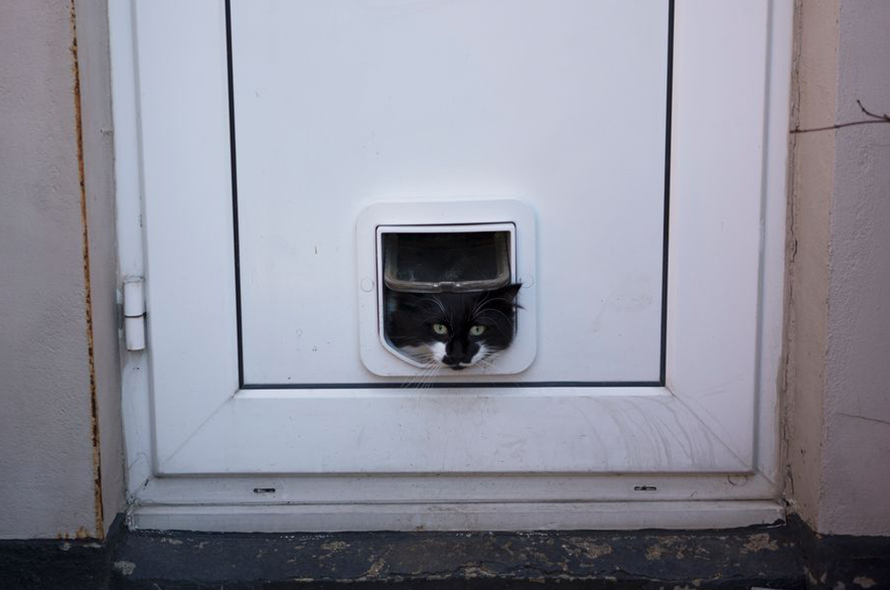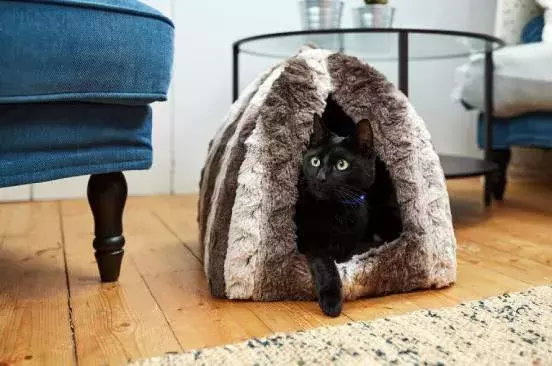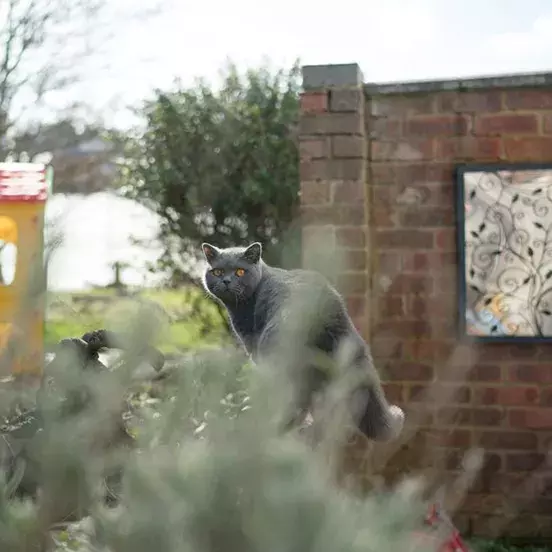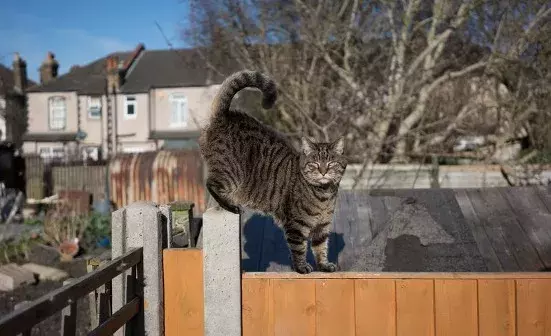Cats like to feel as ‘in control’ of their environment as possible. Giving your cat the option to use a cat flap and come and go as they please rather than always having to ‘ask’ to be let in or out, is likely to help them feel happier, and more relaxed.

Why are cat flaps important for cats?
Access to a garden and the outdoors through a cat flap can provide a huge amount of positive stimulation for your cat, as well as helping them keep physically fit and healthy.
Cat flaps are the best way to provide your cat with regular access to the outdoors when they need it, particularly if you are out during the day or in the evening.
If your cat prefers to go to the toilet outside, giving them this access to the outdoors through a cat flap is important and may help to avoid accidents happening in the house.
Which type of cat flap is best?
There are several types of cat flaps available to choose from. These include:
Manually operated cat flap
This is the most basic type of cat flap and opens when your cat pushes against it. This type of flap offers access to all cats that try to use it. This can make it difficult to stop other cats from coming in to the home, so this type of cat flap may not be ideal if you live in an area with a lot of cats.
Magnet and infra-red operated cat flap
This type of cat flap is operated via a magnet or infrared device attached to your cat's collar. When the collar is within reading distance of the cat flap, the device will unlock the flap, allowing your cat access. These cat flaps may help to deter unwanted cats from getting in, however, any cat wearing a similar device on their collar may also be able to enter (i.e. if your neighbour also uses a magnet operated flap for their cat).
Microchip operated cat flap
This type of cat flap is operated by your cat's microchip and is also suitable for multi-cat homes as, once programmed, can remember several different microchips. These cat flaps are the best method of preventing other cats from entering your home as the reader will only respond to microchips have been pre-programmed.
How can I encourage my cat to use the cat flap?
Many cats will quickly work out how to use a cat flap, but some may need a bit more encouragement. Never be tempted to physically pick up your cat and put them through the cat flap as they may find this stressful or unpleasant and then form a negative association with the cat flap.
Before you introduce your cat to the cat flap it’s important to make sure that your cat is settled into your home and has been introduced to the outside. It’s also a good idea to make sure the garden or outside space is safe and appealing for your cat by providing them with lots of places to explore, hide, or get up high. Please see the following for further advice on how to introduce your cat to the outside as well as how to make your garden or outside space ‘cat-friendly and enriching’. If your cat is a little reluctant to use the cat flap but is generally confident and friendly, you can try the following steps:
- Start by fixing the cat flap in an ‘open’ position using a clothes peg or something similar that can be clipped to the side of the cat flap to wedge it open. If you have a microchip cat flap you will need to programme it before your cat can use it.
- Next, stand by the cat flap and encourage your cat to come to you and offer them one of their favourite treats. Place a few of their treats on the floor, directly in front of the cat flap. Do this a few times and once your cat is readily eating the treats you can then place a few on the bottom edge of the cat flap itself. Again, repeat this several times.
- Once your cat seems comfortable, move outside leaving your cat indoors. Once you’re outside, place treats on the floor near to the outside of the cat flap, as well as a few more on the bottom edge of the cat flap as before.
- As you sit outside, gently call your cat in an encouraging way. Make sure you sit slightly away from the cat flap so that you’re not blocking your cat’s view of the outside through the cat flap.
- If your cat comes through the cat flap out in to the garden, reward them with another treat.
- Once your cat is outside, reverse the process by sitting inside the house and gently calling them to come to you through the cat flap.
- If your cat is shy or nervous, they may want to get used to the cat flap in their own time. In this case, simply leave the cat flap wedged open as above and let your cat explore/use it when they are ready. If you are worried about unwanted cats coming in to the house if the flap is left open, you may want to avoid using treats and keep a close eye on the cat flap area to make sure other cats aren’t trying to enter.
- Once your cat is going in and out through the cat flap comfortably, you can remove the peg so that the cat flap is back in the closed position.
Should I lock the cat flap overnight?
Different cats will have different preferences for when they like to be outside, some during the day, and some overnight. It is preferable to provide them with unrestricted access to the outdoors, so that your cat can be outside when they need it or when they will enjoy it most. If your cat prefers to go to the toilet outside for example, then that constant access is important.
Many people may prefer to keep their cat in at night for fear of the cat not being safe. Whilst some cats will cope well with this, others may find this restriction stressful or frustrating because they may feel they are not able to go outdoors when they need to the most. It’s therefore important to weigh up the potential risks of outdoor access overnight, against how much this may impact negatively on the welfare of your cat.
By being allowed to go outside at any time, your cat will also find it easier to work out a routine with any other neighbourhood cats. Rather than feeling like they have to fight over different areas, this will give them a chance to decide who goes where and when.
If you do decide to keep the cat flap locked overnight make sure you provide your cat with a suitable litter tray as well as things to keep them mentally occupied (such as puzzle feeders and toys). If you find that your cat is very vocal over night when shut in, or if they pace and paw or scratch at the cat flap or door to the outside, then they may not be coping well being confined inside and should ideally be given unrestricted outdoor access.
Download the advice on this page as a handy advice sheet and to use as a reminder:



